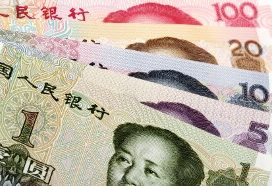Home / Forex news / Chinese Yuan Tests 6.7 As PBoC Leaves LPR Unchanged, Injects More Liquidity

The Chinese yuan is continuing to make gains against the US dollar on Tuesday ahead of the manufacturing and non-manufacturing purchasing managersâ index (PMI) readings. The yuan, which had cratered to as low as 7.17 against the greenback, has been one of the top-performing Asian currencies this year, advancing nearly 3% year-to-date. Could the yuan defy market expectations even more?
On Monday, the Peopleâs Bank of China (PBoC) left its benchmark lending rate for household and corporate loans. For the fifth consecutive month, the one-year loan prime rate (LPR) stood at 3.85%, and the five-year LPR remained at 4.65%. LPR is used for most new and outstanding loans, and the five-year LPR typically determines the pricing of mortgages.
A recent snap Reuters poll of 35 analysts and traders did not anticipate the PBoC to change both LPRs. The LPR serves as a reference rate that is set each month by 18 banks. In August 2019, the central bank modified the LPR by loosely tying it to the medium-term lending facility rate.
Recently, the central bank kept its medium-term lending facility (MLF) unchanged for the fifth straight month. The MLF generally influences the LPR. Moreover, $88.5 million of liquidity was transferred into the market through the MLF and $29.5 billion had matured.
The PBoC said in a statement:
When the financing costs of companies start decreasing, the LPR will start dropping continuously for a certain period. As a result interest repayment costs will also decline for companies.
This comes as the PBoC injected a net $31.1 billion of liquidity in the Chinese banking system through open market operations for the week ending September 18. The central bank pumped $70.8 billion into the markets via reverse repo operations, while $91.45 billion of reverse repo agreements matured.
The USD/CNY currency pair fell 0.37% to 6.7799, from an opening of 6.8052, at 17:13 GMT on Tuesday. The EUR/CNY declined 0.9% to 7.9389, from an opening of 8.0114.
If you have any questions, comments, or opinions regarding the Chinese Yuan, feel free to post them using the commentary form below.
Original from: www.earnforex.com
No Comments on “Chinese Yuan Tests 6.7 As PBoC Leaves LPR Unchanged, Injects More Liquidity”